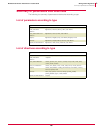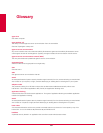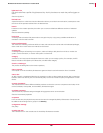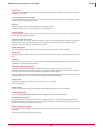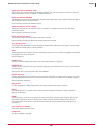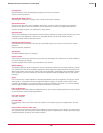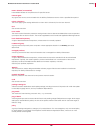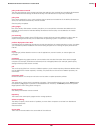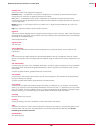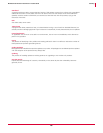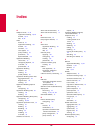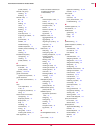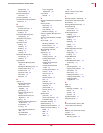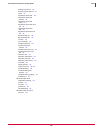
194
McAfee
®
Host Intrusion Prevention 6.1 Product Guide Glossary
severity level
One of four levels of risk assigned to signatures:
Information (blue) – a modification to the system configuration or an attempt to access sensitive system
components, but which are not generally evidence of an attack.
Low (yellow) – a modification to the system configuration or an attempt to access sensitive system
components, but are not identified as known attacks and are indicative of suspicious behavior on the part of
a user or application.
Medium (orange) – a known attack with low to medium risk, or highly suspicious behavior by a user or an
application.
High (red) – attack that poses a serious threat to security.
signature
The set of rules that describes security threats and instructions to a host or network. Each of the three types
of IPS signatures, host (HIPS), custom (HIPS), and network (NIPS), has an associated severity level indicating
the danger of the potential attack.
See also behavioral rule.
signature files
See DAT files.
silent installation
An installation method that installs a software package onto a computer silently, without need for user
intervention.
site
In the console tree, a logical collection of entities assembled for ease of management. Sites can contain
groups or computers, and can be organized by IP address range, IP subnet mask, location, department, and
others.
site administrator
A user account with read, write, and delete permissions, as well as rights to all operations for the specified
site (except those restricted to the global administrator), and for all groups and computers under it on the
console tree.
Compare to global reviewer, global administrator, site reviewer.
site reviewer
A user account with read-only permissions, that can view all settings in the software for the specified site,
but cannot change any settings.
Compare to global administrator, global reviewer, site administrator.
smurf attack
A denial-of-service attack that floods its target with replies to ICMP echo (
ping) requests. A smurf attack
sends
ping requests to Internet broadcast addresses, which forward the ping requests to as many as 255
hosts on a subnet. The return address of the
ping request is spoofed to be the address of the attack target.
All hosts receiving
ping requests reply to the attack target, flooding the target with replies.
snooping
Passively observing a network.
spoofing
Forging something, such as an IP address, to hide one’s location and identity.
state
Describes the manner in which a client is actually functioning (current state), or is functioning after its next
communication with the server (requested state). The console recognizes four different state: Normal,
Uninstalling, No connection, No license.
Status Monitor
See Agent Monitor.



